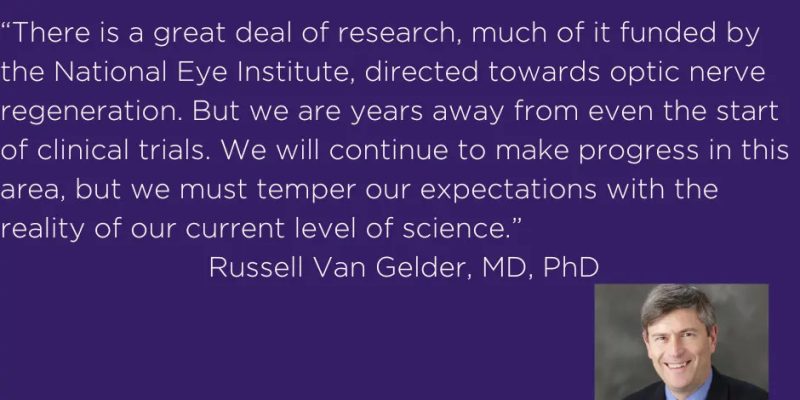Did Surgeons Just Transplant a Whole Eye?
By Susanne Medeiros on Nov. 10, 2023 for the American Academy of Ophthalmology
Yes. But this major surgical achievement will not restore vision. That’s because scientists have yet to figure out how to regenerate the optic nerve. Vision is complicated. We actually see with our brains, not our eyes.
When light hits the retina at the back of our eye, it’s converted into an electrical signal that then travels along the optic nerve to the visual processing system at the back of our brains. The signal travels forward through our brains, constructing what we see and creating our perception of it. When we see, it’s our brain’s work not our eyes.
If the optic nerve, a bundle of more than 1 million nerve fibers, is damaged it doesn’t have the capacity to regenerate or heal itself. The two-way communication between the eye and the brain is cut off, and vision is lost.
World’s First Human Eye Transplant
Yesterday’s news is a medical first. A team of more than 140 surgeons at NYU Langone Health transplanted an entire eye and parts of the face from a single donor. Five months after the transplant surgery, the 46-year-old patient’s eye is showing signs of health, according to his doctors. They have detected direct blood flow to the retina and the cornea appears healthy. But he cannot see.
“This is a major surgical achievement in terms of demonstrating that the transplanted tissues can survive and remain viable and improve the cosmetic appearance of the patient,” said ophthalmologist Yvonne Ou, MD, a researcher at the University of California, San Francisco. “This work will advance research in identifying the feasibility and obstacles to whole eye and partial face transplantation for cosmetic purposes, but the main barrier to vision restoration is the fact that scientists have not yet solved the major problem of optic nerve regeneration. Without overcoming this major hurdle, these types of transplants will not restore vision.”
Can Stem Cells Restore Vision?
In another first, the transplant surgeons combined the donor eye with donor bone marrow-derived adult stem cells in the hope that the stem cells would induce the cells to regrow. Though research is being done in preclinical animal models to study the role of stem cells as a treatment for several eye diseases, there is no conclusive evidence that vision can be restored through stem cell-induced optic nerve regeneration.
There is a lot of exciting research into how the cells in the optic nerve could be coaxed into regrowing. Studies have shown optic nerve regeneration is possible in some lower vertebrates, such as fish and frogs, but there’s no evidence it can work in mammals.
“Whole eye transplants in animal models have shown that a whole eye transplant is surgically feasible, in that the tissue can be transplanted and major blood vessels and nerves can be reconnected, and the graft can survive in the short term,” Dr. Ou said. “However, no models have demonstrated restoration of vision, which is a major challenge to the field.”
Ophthalmologist Russell Van Gelder, MD, PhD, agrees. He is a researcher at the University of Washington where he investigates vision restoration methods for retinal degenerative disease.
“There is a great deal of research, much of it funded by the National Eye Institute, directed towards optic nerve regeneration,” Dr. Van Gelder said. “But we are years away from even the start of clinical trials. We will continue to make progress in this area, but we must temper our expectations with the reality of our current level of science.”
The patient, Aaron James, appears to understand his role in advancing research, telling CNN.
“But I said ‘even if it don’t work, I’ll have an eye, and it will be at least normal-looking, and then you all could learn something off of this,’ ” James said. “You have to have a patient zero.”

